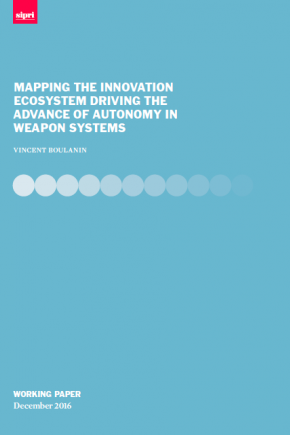Mapping the Innovation Ecosystem Driving the Advance of Autonomy in Weapon Systems
Since 2013 the governance of lethal autonomous weapon systems (LAWS) has been discussed internationally under the framework of the 1980 United Nations Convention on Certain Conventional Weapons (CCW). Thus far, the discussion has remained at the informal level. Three informal meetings of experts (held in 2014, 2015 and 2016) have been convened under the auspices of the CCW to discuss questions related to emerging technologies in the area of LAWS. Several delegations have, however, already indicated that they have concerns as to the impact that a new protocol on LAWS could have on innovation, particularly in the civilian sphere, since, arguably, much of the technology on which LAWS might be based could be dual use.
The aim of this working paper is to help delegates and the interested public to better understand the ‘innovation ecosystem’ that is driving the development of autonomy in weapon systems. The paper maps out where relevant innovations are taking place from three different perspectives: (a) a science and technology perspective (the field of research and development, R&D); (b) a geographical perspective (the location of key R&D institutions); and (c) a sector perspective (whether innovation is driven by civil or military research).
I. Introduction
II. Background: What is innovation and why is it difficult to track in the context of machine autonomy?
III. Academia
IV. Governmental research and development
V. The private sector
VI. Conclusions: Key findings and takeaways for the Convention on Certain Conventional Weapons discussions
Appendix A: Key research institutions in the fields of artificial intelligence and robotics
Appendix B: Government conducted or funded research and development projects related to autonomy
Appendix C: Sample of companies developing autonomous weapon systems as defined by the International Committee of the Red Cross

